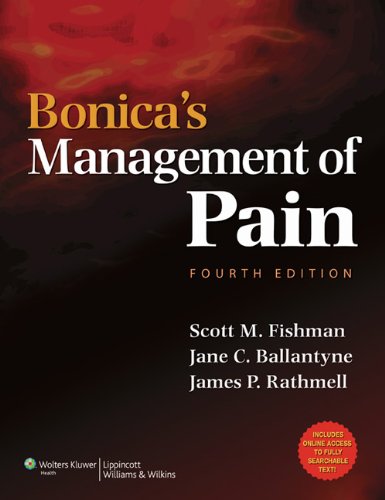

Most ebook files are in PDF format, so you can easily read them using various software such as Foxit Reader or directly on the Google Chrome browser.
Some ebook files are released by publishers in other formats such as .awz, .mobi, .epub, .fb2, etc. You may need to install specific software to read these formats on mobile/PC, such as Calibre.
Please read the tutorial at this link: https://ebookbell.com/faq
We offer FREE conversion to the popular formats you request; however, this may take some time. Therefore, right after payment, please email us, and we will try to provide the service as quickly as possible.
For some exceptional file formats or broken links (if any), please refrain from opening any disputes. Instead, email us first, and we will try to assist within a maximum of 6 hours.
EbookBell Team

0.0
0 reviewsNow in its Fourth Edition, with a brand-new editorial team, Bonica's Management of Pain will be the leading textbook and clinical reference in the field of pain medicine. An international group of the foremost experts provides comprehensive, current, clinically oriented coverage of the entire field. The contributors describe contemporary clinical practice and summarize the evidence that guides clinical practice.
The first section covers basic considerations, including mechanisms of nociception, functional neuroanatomy and musculoskeletal anatomy, psychological aspects of pain, cultural and environmental aspects of pain, and clinical trials. The second section addresses economic, political, legal, and ethical considerations in pain management. The third section describes current methods for evaluation of the patient with pain. The fourth section provides in-depth coverage of specific painful conditions—neuropathic pain syndromes, psychological contributions to pain, vascular, cutaneous, and musculoskeletal pains, pain due to cancer, acute pain, pain in special populations, visceral pain, regional pain, and low back pain. The fifth section describes the full range of methods for symptomatic control, including pharmacologic therapies, psychological techniques, physical and other noninterventional therapies, implanted electrical stimulators, interventional pain management, and surgical approaches. The book concludes with discussions of the provision of pain treatment in a variety of clinical settings, including pain clinics, spine clinics, the primary care setting, the emergency department, the intensive care unit, and end-of-life care.